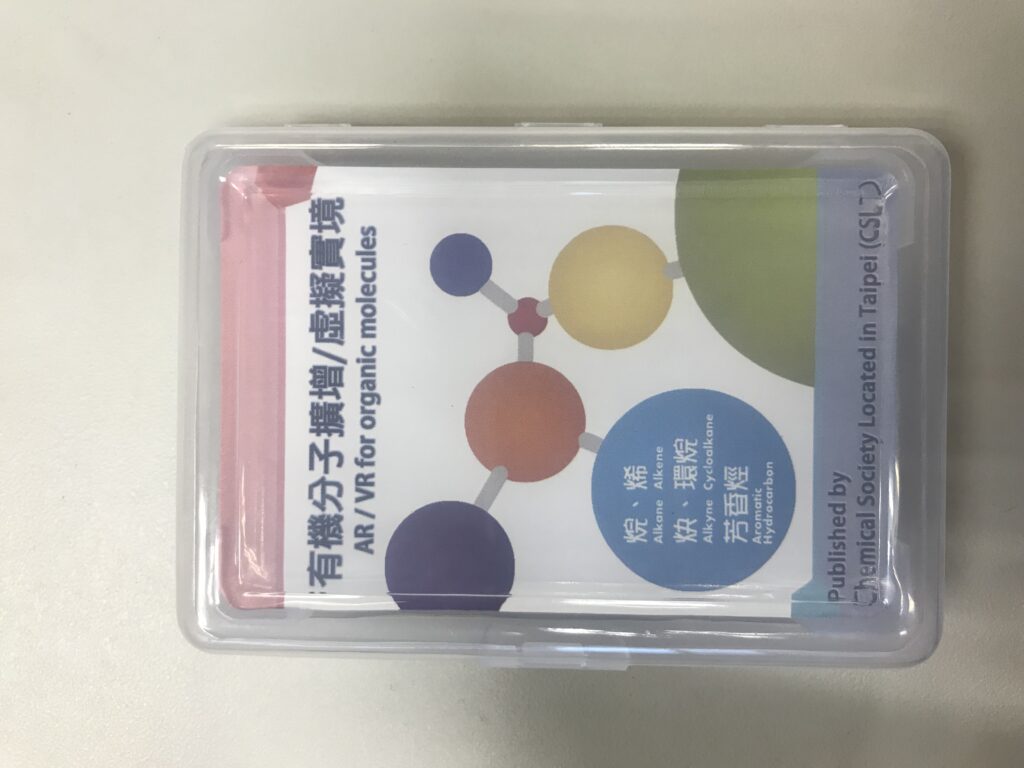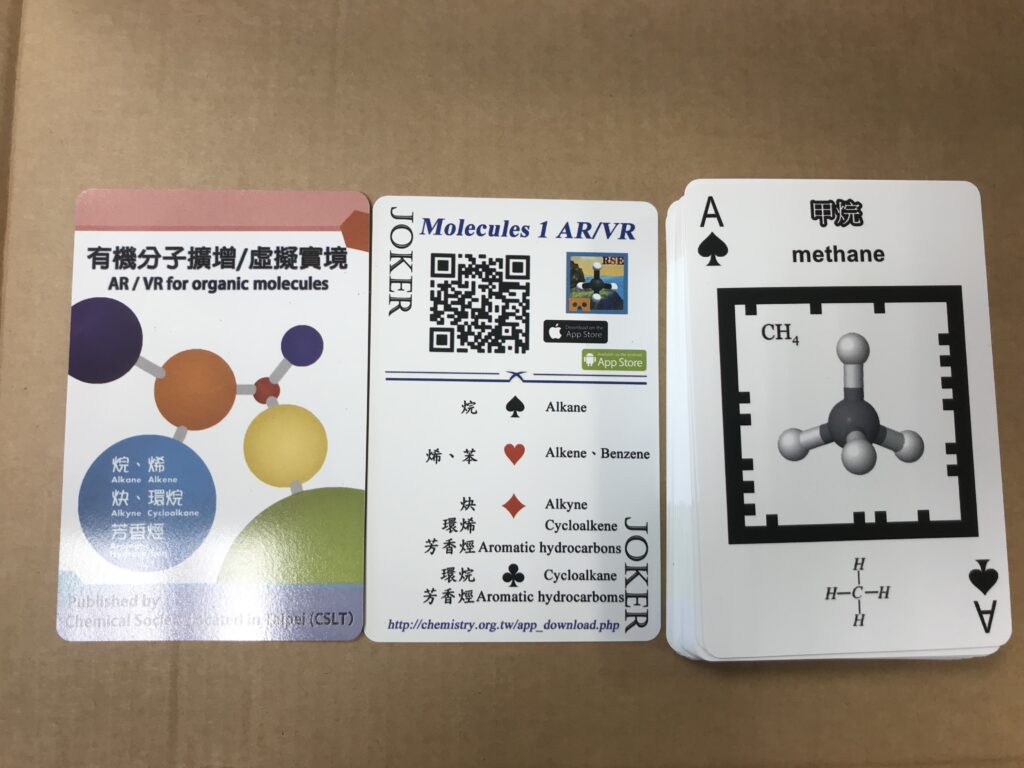Here’s a set of poker cards with a chemistry theme.

The cards are plastic-y in feel, and have a QR code associated with the cards for visualizing molecules. The cards themselves are a bit on the thin side, so unlike cardboard or paper cards cannot be easily stacked.

The QR code links to: chemistry.org.tw/app_download.php [1]. I had trouble downloading the app (today, 2019 Oct. 21), though I’ll try again.
2021 June 3, I’ve been asking my children at home to think about and simulate/roleplay becoming a firefighter. Basically I ask them, “What if you are a firefighter?” My eldest son replied to me that he would want to know how to create fires, with full imagery in my mind of a strongman wielding a blowtorch. I replied that we would need to know how to put out fires, and the knowledge of both goes hand in hand.
What I’ve learned about fire control in the home is that most fires can be contained by smothering the oxygen supply. Some fires are trickier because of what is burning, and so a firefighter probably has to know how to distinguish what is burning and the extinguisher to use. In many fire extinguishers is the chemical alkali+bicarbonate, such as sodium bicarbonate or potassium bicarbonate. These put out fires by engulfing the fire source. I’ve also seen useful items such as a fire blanket that can put out large flames when cooking.
Fires started from chemical means, which might happen at a research facility, can be put out with carbon dioxide based extinguishers, or (what used to be prevalent) Halon. For example, valeric acid, card number 6 of spades, can be put out in this way, safety documentation here [2]. Valeric acid can be extracted from valerian, or Valeriana officinalis, Caprifoliaceae [3], should be a relatively safe chemical.
These cards would be greatly complemented with a sub-theme, such as “Chemicals for Firefighters” or “Chemicals for Detectives (Forensics).” In the chemical firefighting context, I would think knowing what items burn and how they would burn are the key flash card learning points. Ethanol, unfortunately not in this full deck of cards, has a flash point of 55 degrees Fahrenheit or about 13 degrees Celsius. This knowledge is useful to have when we enjoy a small sip of grain spirits or high alcohol content drinks, some which are set on fire briefly prior to consumption. The autoignition temperature is significantly higher at 685 degrees F or about 363 degrees Celsius. The firefighting recommendations can be found at this link [4], essentially, a water spray can put out small fires, and pay attention to fumes. Other items such as soy sauce (does it burn? not the soy itself, sources say) or butter (burns after smoking around 300 to 400 degrees F or about 200 degrees C) would be cards to pay attention to in a deck.
I remember watching this firefighting movie, Backdraft [5], I think before I was eight years of age. The scenes were harrowing, meant to convey the intensity and ferocity of a real fire, and thusly cautioned my handling of live fires. There was probably interesting science in there too, though I was too young to really understand the details. Later in college, I remember developing a deep sense of pride for the NY fire department and their handling of the aftermath of the world trade tower collapse. Somehow that respect was wrapped into the Spiderman stories, probably because of this movie [6]. Even today, my children think of Spiderman as one of their favorite superheroes, amongst the many I have been trying to introduce to them.
Our discussion of firefighters thus far has had limited exposure to fire, except for stove top fires to cook and boil water. I am still thinking of the best situation in which to have my children actually light a fire. The first experience takes some thought, because fire after all is a gift from Prometheus (in the Greek tradition). It is the spark that led to modern inventions and technology. As an example, I think I stayed away from axes because of B-horror movies and Backdraft. If I had been exposed to a Paul Bunyan movie, and lived further from the ‘burbs, I would think first of an axe a trusty tool, and not a weapon of destruction. To wrap up this discussion, here’s a link to some neat fire extinguishing balls [7], which can be bought at Amazon, for example [8]. We will revisit this chemistry poker cards theme.
References
- http://chemistry.org.tw/app_download.php
- https://pubchem.ncbi.nlm.nih.gov/compound/Isovaleric-acid#section=Fire-Fighting&fullscreen=true
- https://en.wikipedia.org/wiki/Caprifoliaceae
- https://pubchem.ncbi.nlm.nih.gov/compound/Ethanol#section=Fire-Fighting&fullscreen=true
- https://www.imdb.com/video/vi0722713?playlistId=tt0101393&ref_=tt_ov_vi
- https://www.imdb.com/title/tt0145487/
- https://www.amazon.com/Automatic-Extinguisher-Mounting-Bracket-Suppression/dp/B074KZDNKY/ref=sr_1_2?dchild=1&keywords=fire+extinguisher+ball&qid=1622720461&sr=8-2
- https://www.amazon.com/fire-extinguisher-ball/s?k=fire+extinguisher+ball